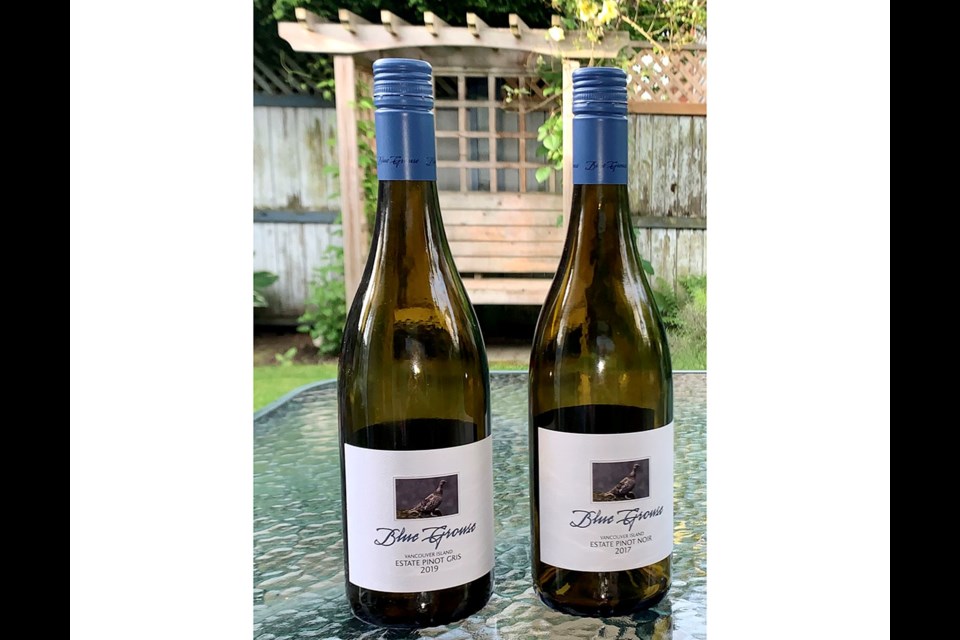Named Vancouver Island’s Best Winery two years in a row, Blue Grouse is known for its organically and sustainably grown grapes and it’s wines. But operating a winery during the COVI-19 pandemic has been a challenge.
The tasting room, which is normally a huge drawing card, has been closed. And restaurants that sell their wines to their diners have been shut.
To survive, Paul Brunner, Blue Grouse’s owner has implemented free shipping in the province and allowed curbside pickup. On-line purchasing has gone from a mere drop in the bucket to an important segment of the business.
Media wine tastings are also forbidden. To overcome this obstacle, Brunner and his winemaker, Bailey Williamson, recently conducted a Zoom webinar and tasting with wine journalists to showcase two of their premium varietals: the 2019 Estate Pinot Gris and the 2017 Estate Pinot Noir.
Located in the beautiful Cowichan Valley, Blue Grouse has 15 acres of vineyards, with barely one acre of Pinot Gris grapes and almost an acre of Pinot Noir. The 34-year-old Pinot Gris vines are among the oldest on Vancouver Island, a crucial step in making wines full of flavour. Williamson proudly reveals his mantra, “Give it as much as you can without getting in the way.”
About a third of the Pinot Gris juice was fermented in one-year-old French oak casks, which adds depth and body to the wine. The rest was fermented in stainless steel, which provides freshness and fruitiness. Both components went through a spontaneous malolactic fermentation that converted the harsher malic acid from the grapes into softer and creamier lactic acid.
The result? One of the more complex BC Pinot Gris I’ve had the pleasure to taste. The nose revealed pear and vanilla scents, with flavours of roasted hazelnut, fresh fruit, plus refreshing acidity the Island is known for, and minerality from the gravel soils of the Cowichan Valley.
Winemaker Baley Williamson recommends serving scallops, spot prawns, or ling cod with the Gris.
The Blue Grouse Estate 2017 Pinot Noir was hand harvested from yields of two tons per acre. A smaller yield of grapes in a vineyard produces fruit with more character.
Following spontaneous fermentation the wine was transferred to barrel. 21 per cent of the wine went into new French oak and 79 per cent went into neutral American oak. Winemakers have to be careful to not over oak the gentle Pinot Noir.
After a year of barrel aging, the wine was finished in clay amphora to allow a more harmonious integration of tannins, fruit, and acidity. It saw no fining or filtration, which preserves much of the delicious Pinot Noir character.
What you get is a sophisticated Pinot Noir that has a bouquet of cherries, cranberries and vanilla with a hint of kirsch. On the palate there’s plenty of ripe fruit, velvety tannins, terroir, and a kiss of oak and cloves. Enjoy with roast pork loin or barbecued salmon.
Looking ahead, Blue Grouse plans to open to the public in June but expects there will be a different visitor experience. Perhaps outdoor vineyard tastings will be introduced. Looking further down the road, more vineyards will be planted concentrating on Pinot Gris, Pinot Noir, and Chardonnay.
In Vancouver, the 2019 Blue Grouse Pinot Gris is not available but the 2018 is at Firefly Liquor Store ($25.50). The 2017 Pinot Noir ($31) is also on their shelves. In North Van you’ll find the Pinot Noir ($27.30) at Gull Liquor Store.



